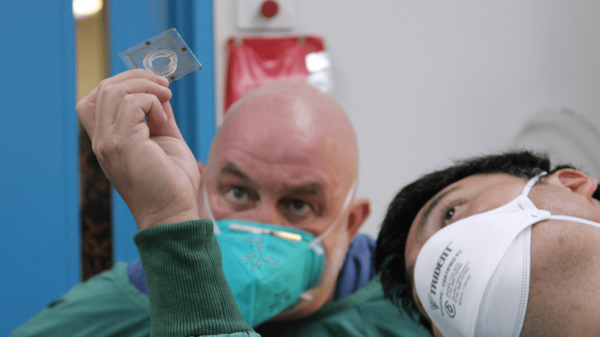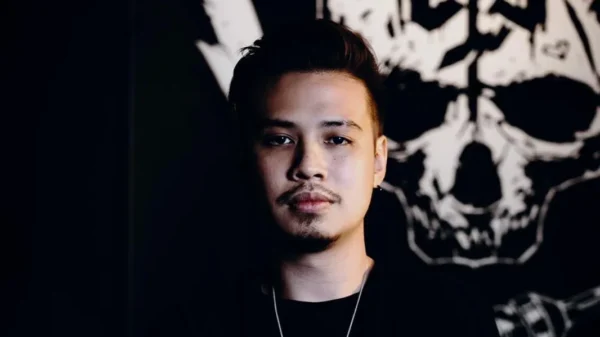Send any friend a story
As a subscriber, you have 10 gift articles to give each month. Anyone can read what you share.
The 10 winners of The New York Times/New York Public Library Best Illustrated Children’s Books Award are chosen each year by a rotating panel of three expert judges.
On the 2022 panel were Emily Jenkins, a prolific children’s author; Maggie Craig, a children’s librarian at the New York Public Library; and Raúl Colón, an award-winning illustrator of many acclaimed picture books (and a two-time recipient of this award).
As they’ve done since 1952, when The Times began presenting the award, the judges consider every illustrated children’s book published this year in the United States.
Inspired by the ruins of a falling-down farmhouse where 12 children once lived, Blackall imagines a family home through richly detailed cross sections that evoke the feeling of peering inside a dollhouse. By layering cutouts of her artwork against bits of wallpaper, curtains and newsprint scavenged from the ramshackle house, she assembles vivid scenes of family life and calls to mind the layers of stories embedded inside an old home. From the leaf-littered basement to the attic cluttered with boxes, this engrossing treasure trove of illustration invites readers to pore over each page and ponder the process of the book’s creation. — Maggie Craig.
A boy named Bo Willie wakes up one morning to find his “yellow dog” has fled and embarks on a desperate journey to find him in the Mississippi Delta. Duncan enriches the tale by quoting classic lyrics from soulful blues songs. Raschka creates his own visual melody with fabric paint, embroidery thread and vivid colors. His art reminds us that the blues can be sad, fun and cathartic. Sort of like real life. — Raúl Colón.
The night lunch cart arrives. Nocturnal creatures, busy and hungry, big and small, can eat a decent meal. Thanks to the mysterious night owl cook, Fox gets pie, Badger gets a sandwich and moths get eggs, sunny-side-up. Fan weaves a nighttime spell of a story about kindness and sharing; Seiferling delivers a dreamlike world in beautiful sepia tones and textures, an idyllic atmosphere of light and shadows. — Raúl Colón.
Rodari’s raucous text is basically a conversation: A grandpa tells the story of “Little Red Riding Hood” all wrong, giving the heroine a yellow hood, the wrong mission, an encounter with a giraffe and so forth. His granddaughter passionately corrects him while thoroughly enjoying each fresh deviation from the classic tale. Alemagna’s textured, inviting marker drawings provide many punch lines of their own, and the pictures become a joyful celebration of on-the-fly storytelling. — Emily Jenkins.
Deeply comforting and joyful, this bedtime story features a wiggly toddler whose patient, playful mom takes him through his nighttime routine by indulging his imagination at every step. Johnsen, whose vivid, chaotic drawings represent Bo’s inner life and home life, resists tropes and shows the way children really perceive creative play: Sometimes, you fully turn into a sea otter in the wide ocean, but other times you’re just a kid who is also a sleepy python. — Emily Jenkins.
A melancholy but ultimately hopeful fable becomes both apocalyptic and celebratory in Zhang’s ink-and-watercolor illustrations. The pictures take a lonely boy through open-air markets, ruins and deserts, from palm trees to cherry trees to an apple tree. By blurring the lines between waking and dreaming, Zhang creates a landscape full of feeling and surprise. Younger children will simply enjoy the rhythms of Barr’s text and the beauty of the images, but teachers and students in classroom contexts will find much in Zhang’s artwork to analyze and unpack — parallels and symbols, echoes and resonant details. — Emily Jenkins.
Drawn in a bouncy, kid-friendly style that recalls 1960s-era pop art, an eager rooster begins work at a hotel where his job is to wake the residents each morning. Trouble is, the hotel is full of international animal clients who don’t understand “cock-a-doodle-doo.” Rooster cries are different in German, Italian, Mandarin and Japanese! Alexander’s bold primary palette belies the complexity of her work: On nearly every page, the images show elements of story and character that her jolly but understated text does not. The panache of this indefatigable bird will brighten any morning. — Emily Jenkins.
What do dogs think about? What do they think about you? “Ugh, he writes all the time,” the French bulldog in this book complains. “I think he needs someone else.” In warm earthy tones and precise, flowing lines, Barengo brings Cali’s words to life. (The dog’s face seems both bemused and exasperated.) By the end, we learn that even a dog can change its mind. — Raúl Colón.
In this poignant, playful picture book, Marwan retraces her family’s immigration to New Mexico from Kuwait. Her ink-and-watercolor illustrations invite readers into whimsy-inflected recollections of her childhood, lending a lightness to the often heavy topics of displacement and separation. From the sun-washed blues and greens of the Kuwaiti seaside, to a doting trio of aunties all dressed in black, to bright balloons floating across the Albuquerque sky, Marwan’s dreamlike artwork grounds her tale in the wistful warmth of memory. — Maggie Craig.
A mother and child sit by a frozen stream watching beavers make tracks in the snow; a family stands together on a hillside, stargazing under a wintry night sky; two children run hand in hand as birds fly overhead. In this moving celebration of a worldview grounded in nature and community, Flett’s vibrant artwork accompanies lyrics by the Cree singer-songwriter Sainte-Marie to capture how the cycle of seasonal change reflects the ache of goodbyes and the joy of reunions. From summer flowers and grazing buffalo to the stillness of snow-covered fields, the stunning landscapes come to life through the people who inhabit them.















































